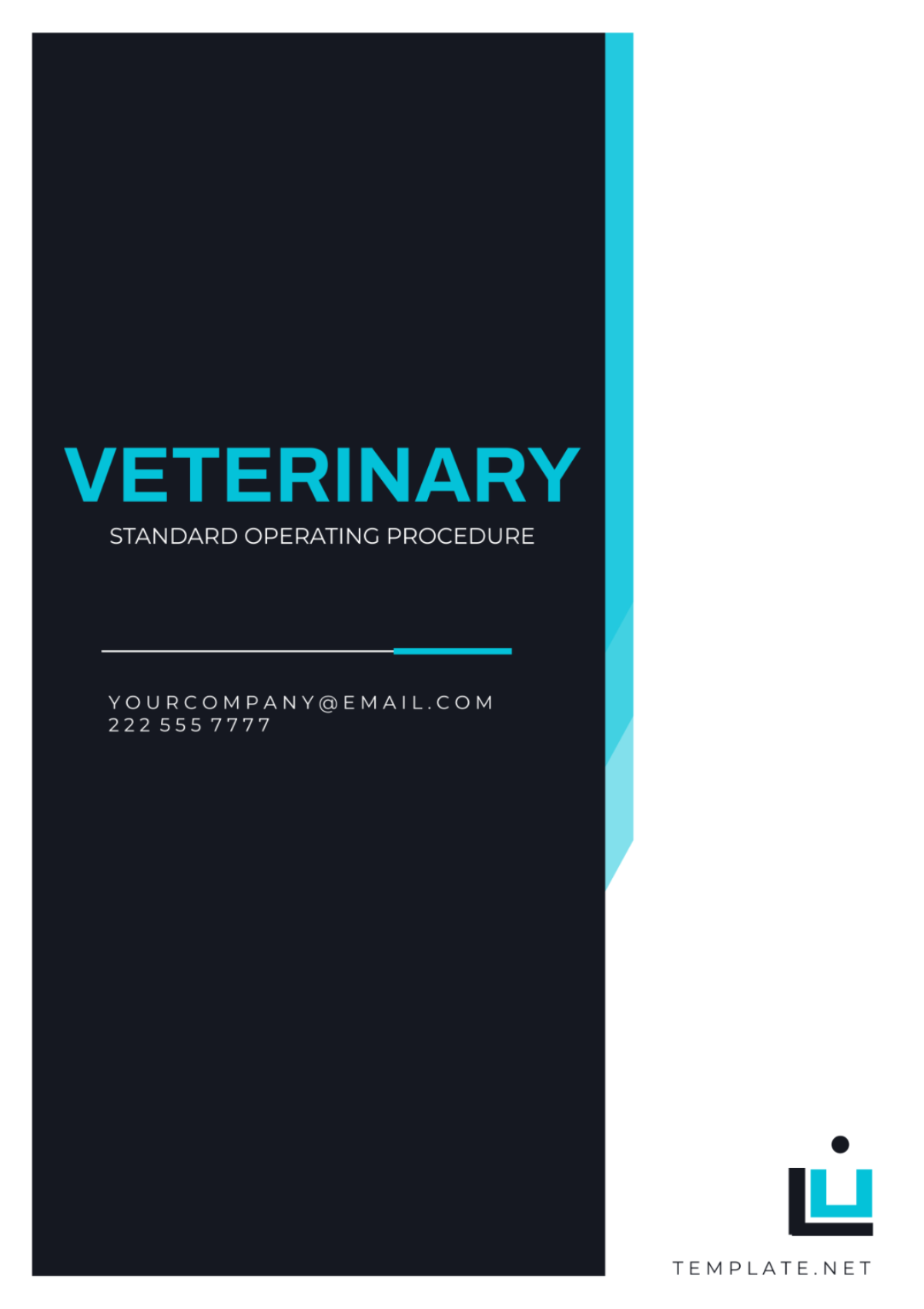Veterinary Standard Operating Procedure (SOP)
I. Introduction
In this particular section, you will find a comprehensive overview detailing the particulars of the Veterinary Standard Operating Procedures (SOP). Furthermore, it also describes the purpose and significance of this SOP for the day-to-day operations and beneficial applications within the business structure of [Your Company Name].
II. Objective
The primary aim or objective of this standard operating procedure (SOP) that has been created and implemented is to clearly define and outline the standard practices, rules, and procedures for providing veterinary care and overseeing the management practices within our organization, [Your Company Name].
III. Scope
This Standard Operating Procedure applies to every individual who is a part of [Your Department] and is actively involved in the execution of veterinary activities within the scope of [Your Company Name].
IV. Responsibilities
This section delineates the responsibilities of personnel involved in veterinary procedures:
[Veterinarian]: Responsible for diagnosing and treating animal illnesses and injuries.
[Veterinary Assistant]: Assists the veterinarian in handling animals and maintaining records.
[Animal Care Technician]: Ensures proper housing, feeding, and cleanliness of animals.
[Laboratory Technician]: Conducts diagnostic tests and assists in research activities.
V. Procedures
A. Health and Safety Measures
Personal Protective Equipment (PPE):
All personnel must wear appropriate PPE, including gloves, masks, and lab coats when handling animals or biological samples.
PPE must be properly disposed of or sanitized after each use.
Biosecurity Measures:
B. Animal Handling
Restraint Techniques:
Transportation Procedures:
C. Veterinary Treatment
Examination Protocol:
Medication Administration:
Administer medications according to the veterinarian's instructions, taking into account dosage, route of administration, and frequency.
Monitor animals for any adverse reactions to medication.
D. Record Keeping
Medical Records:
Maintain detailed and accurate medical records for each animal, including vaccination history, treatment plans, and diagnostic test results.
Ensure confidentiality and security of medical records.
Inventory Management:
VI. Emergency Procedures
In this particular section, the procedures involved during any eventual emergency that could potentially involve an animal are thoroughly outlined. The emergencies in question could manifest in various forms including, but not necessarily limited to the animal suffering an injury, falling ill, or managing to escape from its enclosure or capture.
VII. Training and Certification
All people and professionals carrying out veterinary procedures need specialized training and skills. This not only enhances their abilities but guarantees they can effectively care for animals. They must acquire relevant certifications relating to their roles. These credentials reflect their competency and understanding of standard procedures. This entire process is crucial for their proficiency and adherence to standard operating protocols in a veterinary context.
VIII. References
To support the implementation of this Standard Operating Procedure, please provide a comprehensive list of references. These references should include relevant regulations, guidelines, and best practices that are applicable and helpful in ensuring the execution of this procedure in the most effective manner.
IX. Revision History
Ensure that any modifications or adjustments made to this Standard Operating Procedure (SOP) are thoroughly documented. This documentation should accurately include the specific date on which these revisions took place. Additionally, the documentation should also entail a succinct, yet comprehensive description outlining the nature of the changes that have been implemented.
Standard Operating Procedures Templates @ Template.net






























